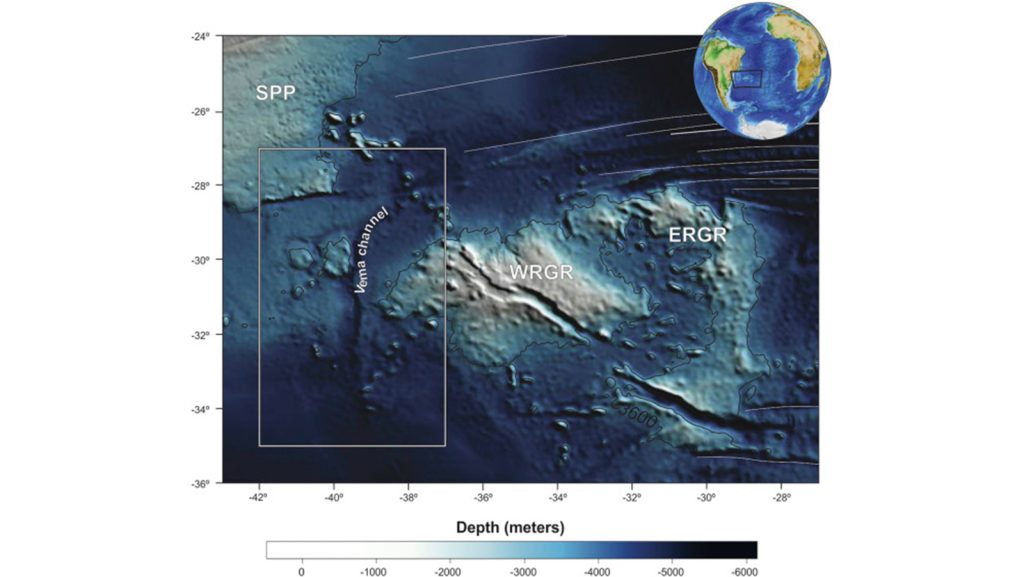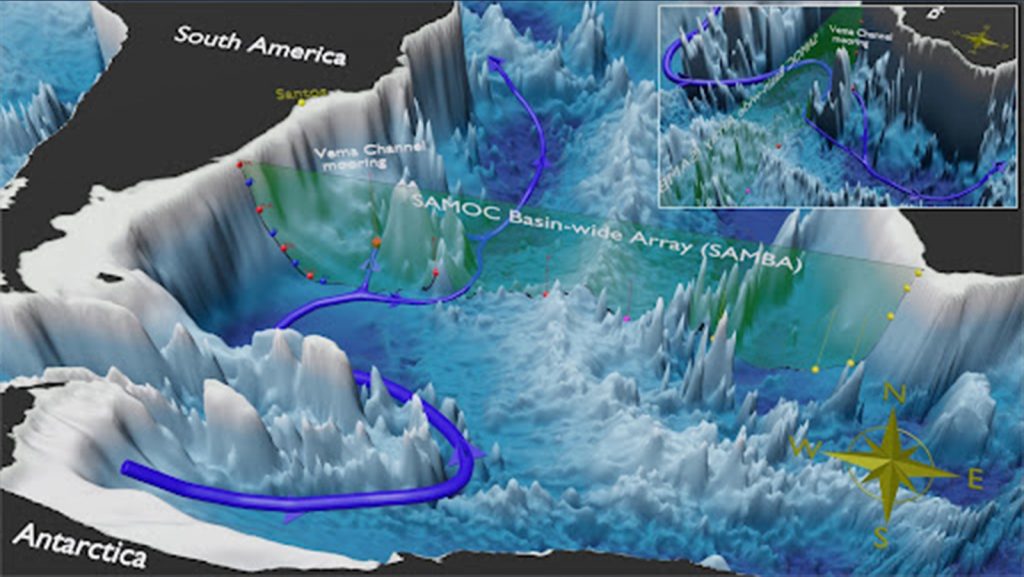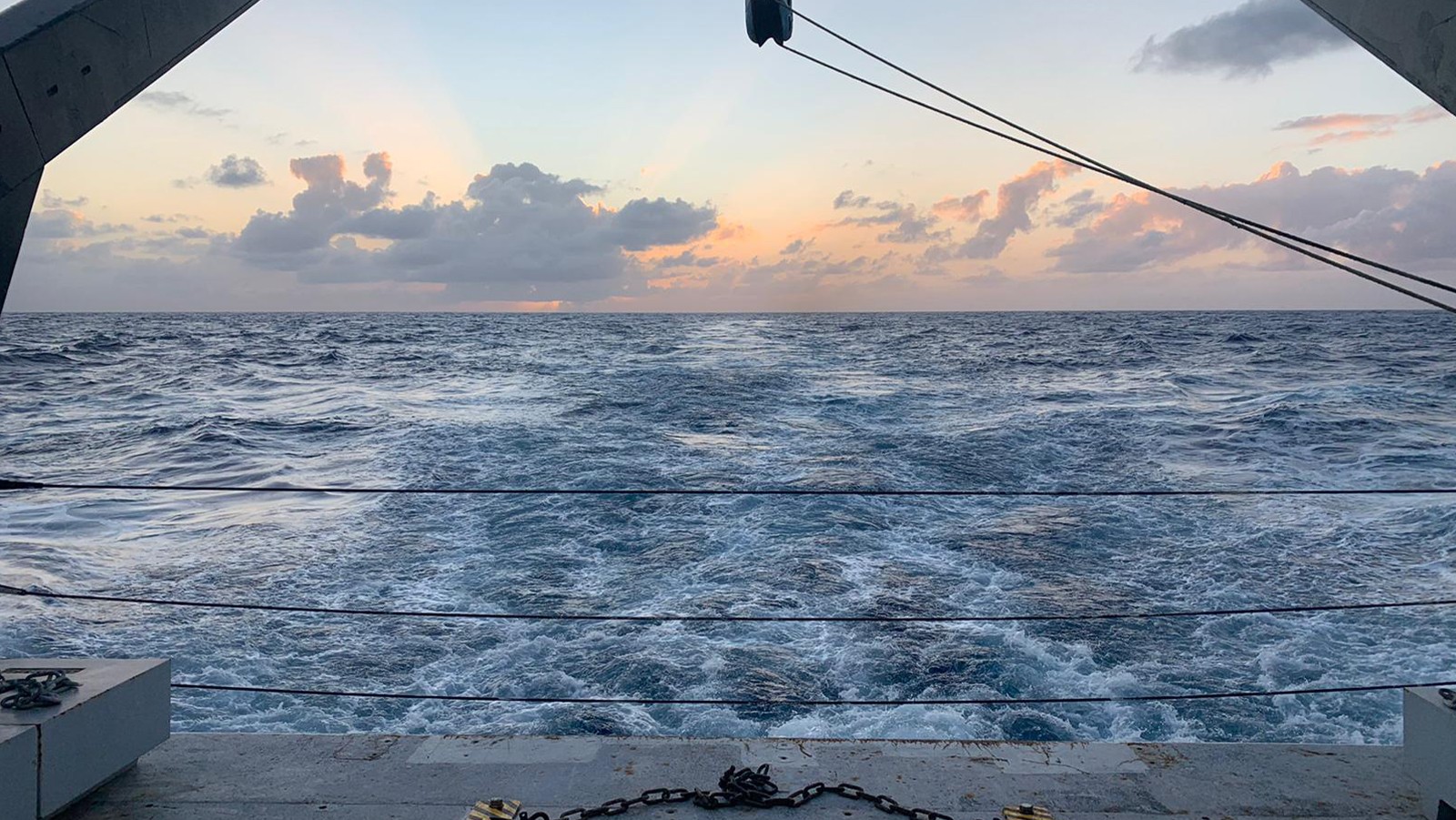In a recent study published in American Geophysical Union (AGU), scientists at NOAA’s Atlantic Oceanographic and Meteorological Laboratory (AOML) contributed to an international study that confirmed warming trends and the possibility of increased rates of warming in one of the deepest channels of the Southwest Atlantic ocean, the Vema Channel.
The Vema Channel is a deep narrow passage in the South Atlantic Ocean, where a large fraction of Antarctic Bottom Water (AABW) in the South Atlantic flows northward. This area is a key location to study because of the deep, cold water that is able to flow through it. AABW represents the Southern Ocean’s coldest, densest water that contributes to the deep/abyssal cell of the Meridional Overturning Circulation (MOC). Increased rates of ocean warming could change the strength of the overturning circulation and affect weather and climate, and nutrient delivery, which impacts coastal areas and offshore fisheries.

Image and caption credit: Constantino, R. R., Costa, I. S. L., Hackspacher, P. C., & de Souza, I. A. (2018). Moho depth and equivalent elastic thickness of the lithosphere over the Vema Channel: A new evidence of an aborted ridge. Journal of South American Earth Sciences, 82, 133-142. (https://doi.org/10.1016/j.jsames.2017.12.011)
The MOC is a component of the global ocean circulation that consists of an upper layer of warmer, lighter waters flowing northward and North Atlantic Deep Water flowing southward underneath. This upper cell sits on top of a cell of colder, denser waters, known as the abyssal cell. These water masses travel around the global ocean, exchanging temperature, salinity, carbon and nutrients along the way.
Other studies based on observations have confirmed the warming of ocean waters since the last decades of the 20th century, but those observations were mostly limited to the upper 2,000 meters of the ocean. More recently, scientists have been able to investigate warming in the deep ocean (below 2,000 meters) using new and existing instrumentation. This allows us to determine the impact of global warming on the overall ocean system. This new study presents a newly observed temperature time series from moorings near the bottom of the Vema Channel, from February 2019 to August 2020. This new time series of the Venma Channel, in combination with historical data, confirms a persistent warming trend of AABW flowing through the Vema Channel. The data suggest the abyssal waters in the Vema Channel have warmed by approximately 0.06 degrees Celsius (°C) between January 1991 and August 2020. They further suggest the possibility of an accelerated warming from 0.0016°C per year, between the early 1990s and 2005, to 0.0026°C per year since 2005.

“This study demonstrates the importance of curating and preserving historical datasets, so that new datasets can be compared against these benchmark observations, to understand and quantify longer-term changes. It also highlights the importance of collaborations between an international team of scientists which allows us to collectively construct long-term records,” said Renellys Perez, an AOML scientist and contributor to the study.
The ocean has absorbed the majority of excess heat injected into the atmosphere over the past century. As a result, the global ocean has warmed significantly, at all depths. However, this warming may have not reached all parts of the deep ocean, so it is important to compare different locations to fully understand the ocean circulation processes taking place. The Vema Channel is one of the only channels deep enough for AABW to flow through, making it a critical component for the abyssal cell of the MOC and an important location to study. Variations of Antarctic Bottom Water act as indicators of the effects of climate change on the deeper ocean.
Reference:
Campos, E.J.D., M.C. van Caspel, W. Zenk, E.G. Morozov, D.I. Frey, A.R. Piola, C.S. Meinen, O.T. Sato, R.C. PEREZ, and S. DONG, 2021: Warming trend in the abyssal flow through the Vema Channel in the South Atlantic. Geophysical Research Letters, 48(19):e2021GL094709, https://doi.org/10.1029/2021GL094709.
